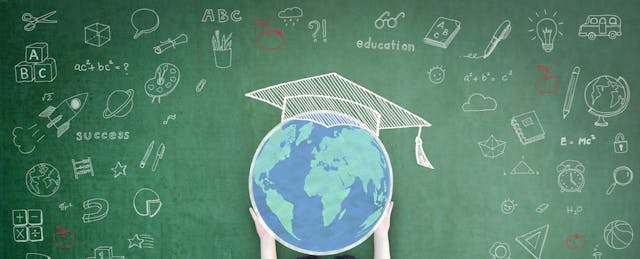On the surface, it may seem like charter schools are the ideal testing grounds for educational technology. They’re designed to be small and nimble. These “incubators of innovation,” as President Obama called them, are able to quickly try out new ideas.But in the journey towards successfully implementing educational technology in classrooms, the tortoise may outpace the hare. That’s because it’s only in big, slow-moving traditional schools that edtech can reach its full potential to democratize education.
More diverse classrooms
Edtech is lauded for its ability to facilitate differentiated instruction in classrooms with a wide range of learners. But charter classrooms aren’t the best test case for this—the diverse classrooms of public schools are far better. About 98 percent of U.S. public schools had at least one student with an Individual Education Plan (IEP) because of special needs in the 2011-12 school year, according to a report by the National Center for Education Statistics. And with the rise of mainstreaming, these students are spending more time in classrooms with non-special-needs students.
Though charters host special-needs students as well, they’re often present in much smaller numbers. A 2015 study by disabilities rights group Equip for Equality found that while 12.5 percent of public school students in Chicago had an IEP, only 9.5 percent of charter school students did. Special education students were also more likely to get expelled from charter schools—and to return to their original school district. The result is public school classrooms that have a much greater need for differentiated instruction than charters and can maximize its potential.
Larger class sizes
Large class sizes are often framed as a negative aspect of public schools. But because of them, those same public schools tend to see even more dramatic benefits from using technology, according to Larry Miller, a senior research fellow at the Center on Reinventing Public Education.
“If you can take a third of the class or half the class and put them on technology for a couple hours a day, that frees up the teachers from doing frontal instruction all day and allows them to do small group instruction or even one-on-one tutoring with time they didn’t have before,” Miller told Wired in 2015. Students using technology get a more personalized experience, too, as teachers tailor digital content to their individual learning styles and proficiencies.
As an associate superintendent of a large public school district that uses edtech, I’ve seen these impacts firsthand during my walkthroughs of our schools. Charter school classrooms certainly benefit from the addition of technology—but it’s hard to match the feeling you get seeing a classroom of 30 students calmly working on devices and receiving small-group instruction from their teacher.
Anthony Kim is CEO and founder of Education Elements, an organization supporting our edtech rollout in Yuma. He agrees that such initiatives at district schools are often more impactful—and scalable. "Our early work with personalized learning focused on charter schools," Kim said. "But we quickly found that it is only through working with districts that we can see outsized impact on the students that need this the most."
Greater community involvement
Public schools deal with more red tape than charters when trying to roll out edtech. But such an obstacle for public schools can actually benefit their cause since it requires the schools to galvanize community support. These shows of community support are vital for the success of an initiative. Teachers are more willing to try new technology in their classrooms when there is more support for tech through the school district.
For instance, to fund our edtech initiative, my own school district in Yuma had to rally support for a $4.8-million dollar education bond. We sent flyers out to members of the community and tried to spread the word any way we could. Our community responded. They understood that Arizona is not funding education appropriately, and, thankfully, stepped up to help. Our community responded.
After we received the funding, we included our stakeholders in our edtech initiative kickoff, as parents came with their children to pick up nearly 9,000 iPads. The community was able to see the smiling faces of students with their new tablets, and understood exactly what their tax money was supporting. At charter schools whose students are spread out over multiple districts, the relationship between parents’ actions and schools’ results can feel a lot more indirect.
It takes a village
It’s a mistake to underestimate public schools’ possible contributions to edtech. With their diverse populations, large classes, and strong community ties, they may be tougher testing grounds for new initiatives. But where those initiatives are successful, they bring about more long-standing and widespread results, because they get the entire community involved. It might take a village to raise a child, but it takes an entire school district to ensure the success of an edtech program.
With contributions from Anna Bitong of Hippo Reads.


